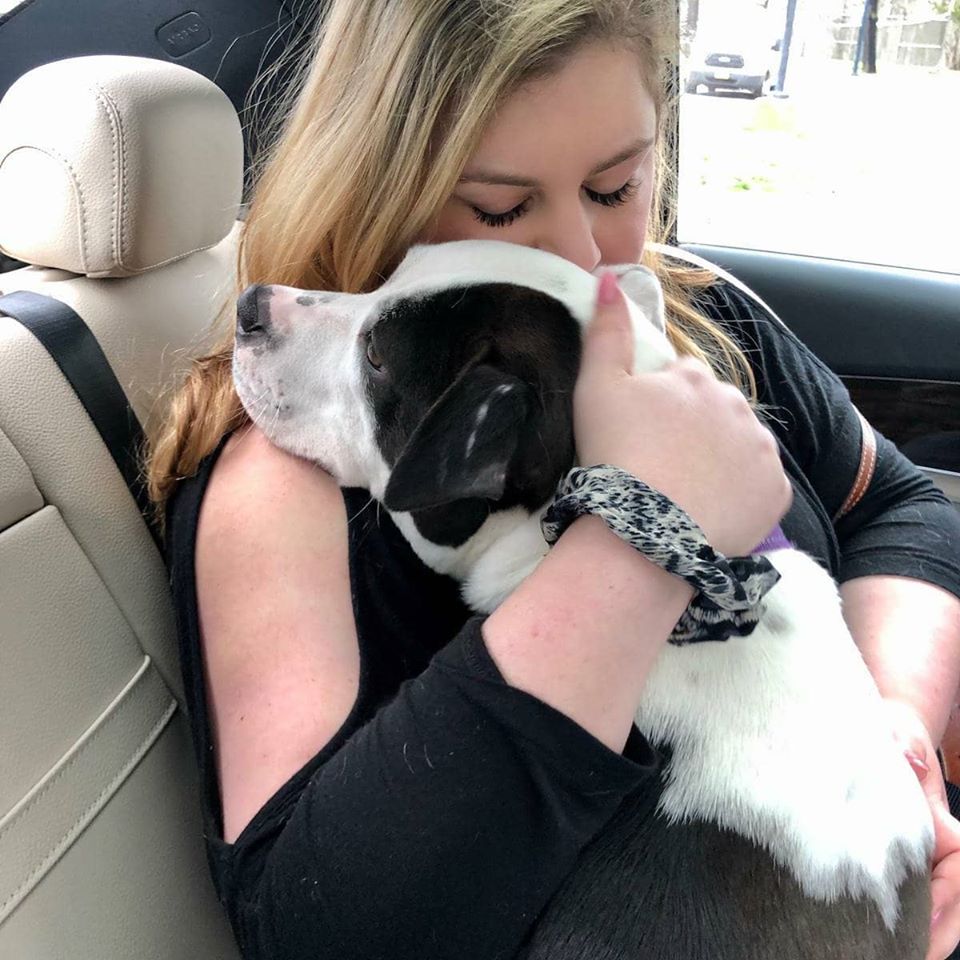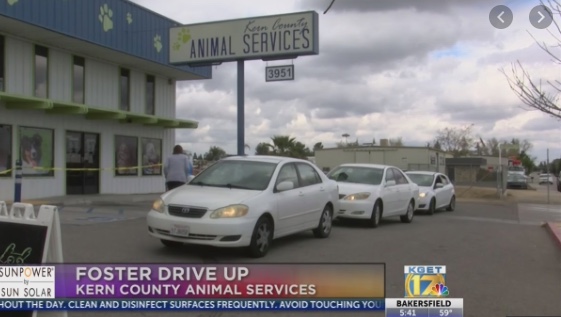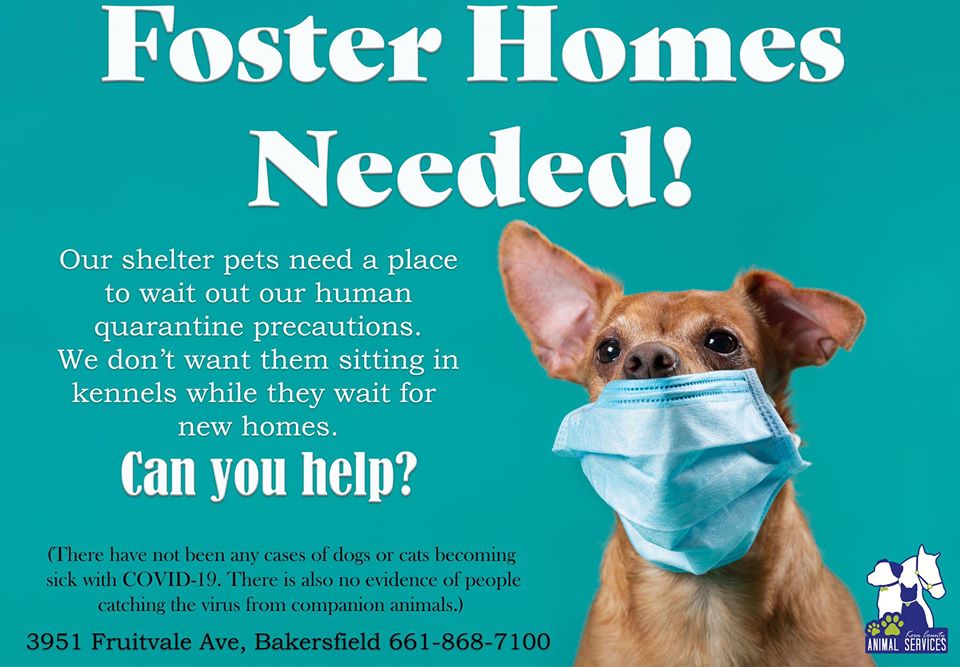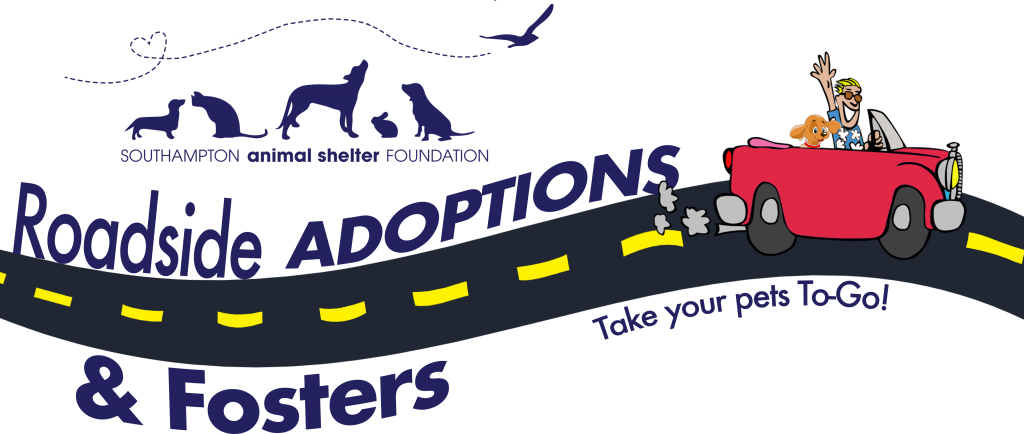News, ideas & inspiration from industry leaders

Keeping Up with COVID-19, 3/22: Drive-Thru & Roadside Foster Programs
Amidst this unprecedented, ever-changing situation, the animal sheltering field is showing resilience, flexibility and innovation—and the response from our communities has been overwhelming. Read on to learn how two organizations on opposite sides of the country adapted their foster programs in order to meet the current needs of the animals and people we serve—proving no matter the coast, working together matters most.
Drive-Thru Foster Pick-up at Kern County Animal Services
On Tuesday, Kern County Animal Services had what they thought was a crazy idea–why not schedule a foster drive-thru event and have volunteers pick up their animals without even having to leave their cars?
By Wednesday, the Bakersfield, CA, agency had placed 88 pets in foster homes. And before the California statewide mandate of sheltering-in-place, which halted the program, that number grew to 104.

KCAS’ Director, Nick Cullen, shares the whole scoop, and the key ingredient necessary for other shelters wanting to give it a try:
The Association: Wow! This program is so inspiring! Can you share the logistics?
Nick Cullen: We had folks fill out a Google document that’s pinned to our FB page. That document has the information needed to narrow down a good match. We then communicated through text or call about what capacity for care the potential foster has. We scheduled a time for them to drive through, dropped off supplies and the pet in their car, all the while maintaining a six-foot distance (yes, even when the foster parents wanted a hug!), and sent them on their way.
The Association: What supplies do you provide volunteers with? How do you stay in contact with them?
NC: We were able to give them whatever they might need. Leashes, bowls, crates (if needed), any medication, food to last a certain amount of time. We try to give all information, supplies, paperwork and directions while the foster parent stayed in their vehicle. They stay in contact with our foster team via text message, Facebook, or by phone after hours, if need be.
The Association: Are there any match-ups that stand out?
NC: I can’t point to anything specific–it has been a whirlwind since Tuesday! My staff has been incredible, and I’m sure they have a bajillion stories to share, but they’re all home for the most part. The best feeling I personally have received is from looking at the comments on the Facebook post we made asking for photos of foster pets. It’s just so heartwarming. Just what everyone needs right about now
The Association: Any extra precautions to consider?
NC: I think there are definitely precautions to take. We are in a position where we are not only the sheltering mechanism in our county, but we are also the enforcement. So, when someone contacts us to become a foster, we can do a criminal search for anyone who we have charged with, accused of, or investigated for neglect or cruelty. If at any time, contact is lost with a foster parent, or anything else comes up that would concern us for the well-being of that animal, our enforcement officers can get the animal back.
The Association: What’s the key takeaway from this experience?
NC: Above all else, you really don’t know what your community is capable of until you ask. Really ask, with a passionate plea, and a thought-out plan. If you’re honest with people, not Draconian, and you communicate the plan, balancing the necessary precautions with still getting animals to safety becomes easier.

Roadside Fosters at Southampton Animal Shelter Foundation
When the Long Island, New York, shelter closed to the public earlier this week, they still wanted to get as many pets as possible into foster and permanent homes—hence, the Roadside Adoptions and Fosters program. According to Director of Adoptions, Katie McEntee, SASF didn’t need to start from scratch. They made a few tweaks to their existing programs to ensure they’re run in a “sanitary, social-distance-friendly fashion,” and have seen great success.

The Association: What is the process for pairing up volunteers with fosters, and pets with adopters?
Katie McEntee: With our Roadside Adoption/Foster Program, we are following our same guidelines as we do to match up pets and potential owners as we normally do. Family members, children in home, lifestyle, other pets, etc.
The Association: What supplies are you giving fosters? How does the drop off/pick up happen?
KM: To take part in this program, fosters must fill out an application and be approved. One of our adoption coordinators will contact them for an adoption/foster interview and to discuss possible matches. We let fosters know right away that fostering is free—we give them everything from food to beds to bowls, so they can take their foster pet home with all the necessary supplies. To take part in this program, fosters must fill out an application and be approved. One of our adoption coordinators will contact them for an adoption/foster interview and to discuss possible matches.
We then meet the foster volunteer curbside to introduce them to our pet(s). We will still be implementing interactions for adopters/fosters who already own dogs, all of which can be done outside in a large area in order to limit social interactions and gathering between us humans.
We stay in close contact with our fosters. During shelter hours, we support our fosters with anything they need and for emergency or after hours we have a foster cellphone so foster families can always reach us.
The Association: Any particular foster parent/animal match-ups stand out?
KM: Yes! So many! Our community has been outstanding. We’ve had so many people reach out to us. We had 8 dogs go to foster homes since we launched this program only yesterday.

Roxie and Rosie, a bonded mother/daughter pair, went into a foster home together. They are great dogs, but were at our shelter for awhile because fostering two dogs together can often be difficult. And as I’m writing this, Gus Gus, one of our more sensitive dogs, found just the right family, complete with two doggy siblings!
The Association: Any advice for other shelters wanting to give this a try?
KM: Just do it! We’ve had a great response. We’re still operating and getting dogs out while limiting the public access to keep everyone at safe distances.
Are you running a similar program at your agency? Drop a note to news@theaawa.org or leave a comment on this post.


